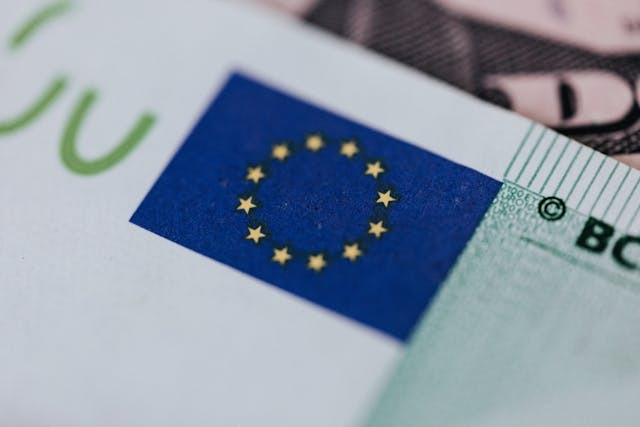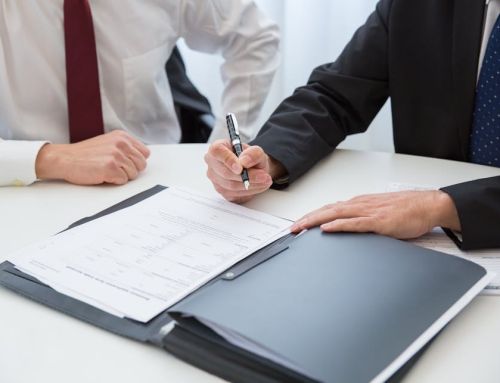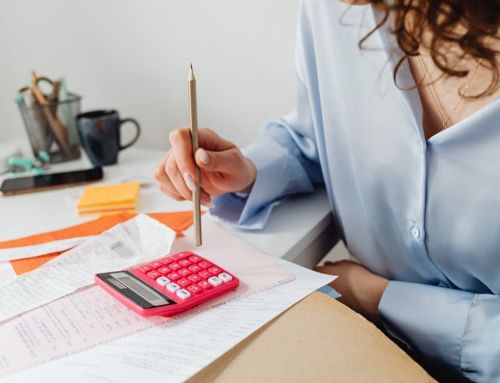Verifying a company’s VAT number is essential for ensuring compliance and protecting your business from potential fraud. In the UK, several methods are available to check a company’s VAT registration status. This guide will walk you through the most reliable ways to check a VAT number, including using official government tools and understanding the importance of VAT verification.
This blog provided by The Taxcom covers all the steps to check VAT numbers using HMRC and other reliable methods.
What Is a VAT Number and Why It Matters
A VAT (Value Added Tax) number is a unique identifier issued by HM Revenue & Customs (HMRC) to businesses in the UK that are registered for VAT. It plays a crucial role in tax compliance and inter-business transactions.
Structure of a UK VAT Number
A standard UK VAT number consists of nine digits, typically prefixed with “GB”. For example: GB123456789. In some cases, government departments or health authorities may use a different format such as GD123 or HA123.
Understanding the format is important because it helps in validating whether the VAT number presented is even structurally correct before performing a deeper check.
Who Needs a VAT Number?
Any UK business with a taxable turnover above the VAT threshold (currently £90,000) must register for VAT. Businesses under this threshold can still voluntarily register, which may enhance their credibility with clients and suppliers.
Why Checking a VAT Number Matters
- Preventing VAT Fraud
By verifying VAT numbers of your suppliers or clients, you protect your business from becoming an accessory to VAT fraud — a serious offence that can lead to financial penalties or legal action. - Ensuring Input VAT Claims Are Valid
To claim input VAT (the VAT you pay on purchases), the invoices must come from a VAT-registered business. If you don’t check the VAT number, HMRC can reject your claim. - Enhancing Business Credibility
Due diligence through VAT verification shows partners and stakeholders that you operate a compliant, well-managed business.
How to Check VAT Number Using HMRC Online Tool
The most direct and reliable way to check a VAT number for a UK company is through HMRC’s official VAT number checking service. This tool confirms whether a VAT number is valid and provides basic details about the company it belongs to.
Step-by-Step Guide to Using the HMRC VAT Checker
- Access the Tool
Go to the official UK Government website at www.gov.uk/check-uk-vat-number. This is HMRC’s dedicated VAT number validation tool. - Enter the VAT Number
Input the VAT number you want to verify. Ensure you include the prefix (usually “GB” for UK companies). - Submit Your Request
Click the “Check” button. The tool will return a result showing whether the VAT number is valid and, if so, the name and address of the business it is registered to.
Information You Can Obtain
- Validity of the VAT number
- Company name associated with the VAT number
- Business address (where available)
- Confirmation that the business is VAT-registered
This tool is updated in real-time using HMRC’s internal systems, so it’s one of the most reliable methods for UK VAT number validation.
Limitations of HMRC VAT Checker
- Only verifies UK VAT numbers.
- Doesn’t provide full company details (e.g. trading name, directors, financials).
- Doesn’t flag suspected fraud or misuse.
Despite these limitations, this should always be your first stop when trying to check a VAT number in the UK.

How to Verify EU and International VAT Numbers (Using VIES and Other Tools)
If you’re dealing with companies outside the UK, especially within the European Union, you’ll need to verify VAT numbers using the VAT Information Exchange System (VIES) — the EU’s official tool for VAT number validation across member states.
Using the VIES VAT Number Validation System
- Visit the VIES Website
Go to ec.europa.eu/taxation_customs/vies. This is the European Commission’s portal for VAT number validation. - Select the Member State
Choose the country where the company is based from the dropdown menu. Each EU country has its own VAT number format. - Enter the VAT Number
Type in the VAT number (excluding any spaces or punctuation). Make sure the format complies with that country’s standards. - Submit the Request
Click “Verify” or “Submit.” If valid, the system will confirm that the VAT number is registered and provide the business name and address, if available.
When to Use VIES
- Trading with EU-based companies.
- Confirming a customer’s or supplier’s VAT registration to zero-rate intra-EU supplies.
- Validating that you’re not liable for VAT on EU services.
What VIES Does and Doesn’t Show
VIES Confirms:
- Whether the VAT number is valid
- The member state of registration
- The company’s registered name (sometimes)
VIES Does Not Confirm:
- Company legitimacy beyond VAT
- Tax filing history or compliance status
- Whether the company is actively trading
Alternatives for Non-EU Countries
For businesses outside the EU, check if the local tax authority offers a VAT validation service. Some common examples include:
- Australia: Use the Australian Business Register (ABN Lookup).
- Norway: Brønnøysund Register Centre.
- Switzerland: UID Register.
For international due diligence, you may also consider commercial tools like D&B (Dun & Bradstreet), Creditsafe, or Bureau van Dijk, which often include VAT data alongside broader financial and legal records.
Other Methods to Check VAT Numbers in the UK (Beyond HMRC)
While the HMRC VAT checker is the most authoritative tool, there are additional ways to check a VAT number in the UK, especially when doing broader due diligence or when you need to cross-reference information.
1. Use Companies House Data
Companies House is the UK’s registrar of companies. Although VAT numbers aren’t always listed, Companies House can be used in combination with other data points to verify a business’s legitimacy.
- Search the company’s registered name or number at www.gov.uk/get-information-about-a-company.
- Cross-check the company’s legal name, incorporation date, and trading status with what is listed on invoices or provided with the VAT number.
- While VAT numbers are not published here, discrepancies in legal names may flag issues requiring further investigation.
2. Check Invoices Carefully
Genuine UK VAT invoices must contain:
- The supplier’s VAT number
- The full company name and address
- An itemised breakdown of VAT charged
- The total amount including VAT
If a company charges VAT but doesn’t include their VAT number on the invoice, that’s a red flag.
3. Contact the Supplier Directly
If you’re unsure whether a VAT number is legitimate:
- Call the business and request confirmation of their VAT registration number.
- Ask for a copy of their VAT registration certificate.
- Document all communication for your records.
Fraudulent businesses may hesitate or avoid giving clear answers, which can be another warning sign.
4. Use Commercial Due Diligence Tools
Platforms like:
- Creditsafe
- Dun & Bradstreet
- Experian Business Express
provide deeper insights into a company’s registration details, credit history, director background, and sometimes VAT status. These can be invaluable if you’re entering a long-term business relationship or large transaction.
5. Check Industry Directories or Trade Associations
Some industry-specific directories verify the UK VAT registration status of their listed businesses. For example, suppliers in the construction sector may be listed with valid CIS and VAT registrations.
Common VAT Number Scams and How to Avoid Them
VAT number scams are increasingly sophisticated and can cause serious financial damage. Understanding how these scams work — and how to avoid them — is crucial when you check VAT number information for any UK company.
1. Fake VAT Invoices
Fraudsters may send bogus invoices using made-up VAT numbers or slightly altered legitimate ones. These often target large businesses or public sector bodies, relying on overwhelmed finance departments to process them without proper checks.
How to avoid it:
- Always verify the VAT number through the HMRC VAT checker.
- Ensure the invoice matches a known supplier’s trading details.
- Scrutinise the email address or domain name for subtle inconsistencies (e.g. “.co” instead of “.co.uk”).
2. Identity Cloning
Scammers might impersonate a real company and use their genuine VAT number on fraudulent invoices. If you only check that the VAT number is valid without confirming the supplier’s actual identity, you could fall for this.
How to avoid it:
- Cross-check the supplier’s legal name and address with the VAT number result.
- Use Companies House to verify the trading entity.
- Don’t rely solely on the VAT number; consider the full context.
3. Phishing for VAT Information
Some fraud attempts start with phishing emails pretending to be from HMRC, requesting confirmation of your VAT number or login credentials. Responding can expose sensitive data that may later be used to defraud your business.
How to avoid it:
- HMRC never asks for VAT numbers or login info by email.
- Check the sender’s domain (e.g. “@gov.uk” is legitimate, but “@hmrc-vat.com” is not).
- Report suspicious emails to phishing@hmrc.gov.uk.
4. False VAT Registration Claims
Some businesses — especially new or small ones — may falsely claim to be VAT-registered to appear more established or to charge VAT illegally.
How to avoid it:
- If you’re unsure, ask for their VAT registration certificate.
- Confirm their VAT number using the HMRC tool.
- Refuse to pay VAT until registration is confirmed.
5. Charging VAT After Deregistration
A company that has deregistered from VAT (for example, after downsizing or ceasing operations) is no longer allowed to charge VAT. If they continue to do so, it’s not just unethical — it’s illegal.
How to avoid it:
- Re-check the VAT number periodically, especially with long-standing suppliers.
- Note the date of last validation.
- If in doubt, contact HMRC directly.
What to Do If You Discover a Fake or Invalid VAT Number
If you’ve checked a VAT number and discovered it’s fake or invalid, you need to act swiftly. Inaction can lead to denied VAT claims, penalties from HMRC, and entanglement in fraud investigations.
1. Stop Transactions Immediately
If you’re in the middle of a transaction with the business:
- Pause all payments.
- Refrain from issuing or paying invoices involving VAT.
- Inform your internal finance or compliance team.
This is a precautionary step to prevent exposure to financial or legal risk.
2. Double-Check Your Validation
Before assuming a VAT number is fake, confirm that:
- You entered the number correctly.
- You used the correct tool (HMRC VAT checker for UK numbers, VIES for EU).
- The number hasn’t recently changed due to deregistration or structural changes (like mergers).
If it still comes back invalid, proceed with escalation.
3. Contact the Supplier
There’s a chance the supplier made a genuine mistake. Reach out to them and ask for:
- Confirmation of their VAT number.
- A copy of their VAT registration certificate.
- A revised invoice if errors are found.
If the business cannot provide satisfactory answers, escalate the matter.
4. Report the Issue to HMRC
If you suspect VAT fraud, contact HMRC directly:
- Use the VAT fraud reporting form at gov.uk.
- Call the HMRC VAT Fraud Hotline at 0800 788 887.
Be prepared to supply the following:
- The suspicious VAT number
- Business name and address
- Any invoices or communications
- A summary of your concerns
Reports can be made anonymously, but including contact details can speed up investigations.
5. Adjust Your VAT Records
If you’ve already accounted for VAT based on an invalid number:
- Reverse any VAT input claims associated with the invalid number.
- Record the reversal in your next VAT return.
- Consult your accountant to ensure compliance and accurate record-keeping.
6. Implement a Verification Policy
Use this experience to put preventive measures in place:
- Make VAT number checks mandatory for new suppliers.
- Periodically re-validate long-term partners.
- Keep a record of all VAT number checks with dates and results.
How Often Should You Check a VAT Number?
Many businesses assume checking a VAT number once is enough — but that can be a costly mistake. VAT status can change over time due to deregistration, administrative errors, or fraudulent use. That’s why routine verification is a smart compliance move.
When You Should Check a VAT Number
- Before Establishing a New Business Relationship
Always validate the VAT number before signing contracts or issuing the first invoice. This is especially important with high-value transactions or overseas suppliers. - Whenever You Receive a New VAT Invoice
If you’re billed VAT, make it a policy to check that the number is active and matches the details on the invoice — especially if the supplier is new or unfamiliar. - On a Periodic Basis (Quarterly or Annually)
For ongoing suppliers or partners, schedule regular VAT checks. Changes in company structure, mergers, or VAT deregistration can occur without notice. - If You Notice Any Red Flags
If something about the invoice seems off — like discrepancies in address, VAT totals that don’t calculate correctly, or unusual bank details — validate the VAT number immediately. - When Trading Internationally
For cross-border transactions, especially within the EU, check VAT numbers with every new invoice to ensure zero-rating compliance and reduce audit risk.
Benefits of Frequent VAT Number Checks
- Avoids reclaiming VAT from non-registered businesses
- Flags deregistered or non-compliant partners early
- Supports audit-ready VAT records
- Strengthens due diligence processes
Automating the Process
Large businesses can automate VAT number verification using:
- API integrations with HMRC or VIES
- Accounting software that includes VAT number validation (e.g. Xero, QuickBooks)
- Enterprise tools that combine credit checks and VAT monitoring
Automating these checks ensures consistency and helps maintain a clear audit trail.
How to Document and Record VAT Number Checks for Compliance
Keeping a detailed record of your VAT number checks is more than good practice — it’s essential for demonstrating compliance if you’re audited by HMRC. Accurate documentation supports your VAT claims and protects your business from legal or financial penalties.
Why You Must Document VAT Checks
HMRC expects businesses to show “reasonable care” in their tax affairs. If you claim input VAT on purchases from unregistered suppliers, even unknowingly, you could be liable. Documenting your checks helps prove that:
- You verified each supplier’s VAT status
- You acted in good faith and performed due diligence
- You followed a consistent compliance process
What Your VAT Check Record Should Include
Each time you check a VAT number, record the following:
- Date of check
- Name of the person performing the check
- VAT number checked
- Business name associated with VAT number
- Source/tool used (e.g., HMRC checker, VIES)
- Result of the check (valid/invalid)
- Supporting documents (screenshots or PDF confirmations)
Save this information in a secure digital location — ideally as part of your accounting or ERP system.
How Long Should You Keep These Records?
HMRC requires businesses to keep VAT records for at least six years, including evidence related to input tax claims. This includes your VAT number checks.
For cross-border EU transactions, especially zero-rated sales, this documentation becomes even more important. In the event of a VAT inspection, missing evidence may result in denied claims and penalties.
Best Practices for VAT Documentation
- Create a Central VAT Check Log: Maintain a master spreadsheet or digital log for all checks.
- Attach Evidence to Transactions: Link each VAT check record to the related invoice or payment in your accounting system.
- Schedule Regular Audits: Review your VAT number check log quarterly to ensure completeness and consistency.
- Train Your Staff: Ensure everyone involved in procurement, finance, or accounts payable understands how and why VAT number checks are recorded.
Frequently Asked Questions
1. Why should I check VAT number information for every new supplier?
Checking a VAT number ensures the supplier is properly registered with HMRC. If you fail to check VAT number validity and later discover the business isn’t registered, your VAT input claims could be denied, leaving you out of pocket. It’s a crucial part of financial due diligence.
2. Is it mandatory to check VAT number for UK transactions?
While it’s not legally mandated to check VAT number for every transaction, HMRC expects businesses to take “reasonable steps” to prevent VAT fraud. That includes checking VAT numbers — especially when dealing with new, high-risk, or foreign suppliers.
3. How do I know if a UK VAT number is real or fake?
Use the official HMRC tool at gov.uk/check-uk-vat-number to verify any UK VAT number. You can check VAT number validity instantly, and if it’s not recognised, it’s either invalid, unregistered, or has been deregistered.
4. What happens if I claim VAT using an invalid VAT number?
If HMRC audits your business and finds you claimed VAT on purchases from an unregistered or fake business, you may have to repay the VAT, plus face penalties or interest. That’s why you must check VAT number details before making any claims.
5. Can I use the VIES tool to check UK VAT numbers after Brexit?
No. Since Brexit, the UK is no longer part of the EU VAT system. You must check VAT number information for UK companies exclusively via the HMRC checker. The VIES tool is now only for validating VAT numbers in EU member states.
6. What does it mean if a VAT number is valid but the company name is slightly different?
Company names may differ slightly due to legal versus trading names. However, if there’s a significant mismatch, it could be a red flag. Always double-check and ask the supplier for their VAT registration certificate to confirm. When in doubt, check VAT number again with full context.
7. Is it safe to rely on the VAT number shown on an invoice?
No — not without verifying it. Invoices can be forged or edited. Always check VAT number authenticity through HMRC or VIES to confirm the number is officially registered and matches the correct business name.
8. How can I check VAT number information for non-EU businesses?
You’ll need to use that country’s tax authority or a commercial verification service. For example:
- Australia: Use ABN Lookup
- Norway: Brønnøysund Register Centre
- Switzerland: UID Register
If the country doesn’t offer public lookup, request a copy of the VAT registration certificate directly from the supplier.
9. Should I store evidence every time I check a VAT number?
Yes. Keeping a record each time you check VAT number information helps protect your business during HMRC audits. Capture screenshots, save the check date, and link the verification to the relevant transaction or invoice.
10. How can I automate the process to check VAT number regularly?
Use accounting platforms like Xero, Sage, or QuickBooks that offer integrated VAT number verification. For larger businesses, API solutions can automatically check VAT number data against HMRC and VIES databases in real time.
Stay Compliant — Partner with The Taxcom
At The Taxcom, we help UK businesses stay ahead of compliance. From check VAT number processes to full VAT advisory and risk mitigation, our team of experts ensures your operations are airtight and audit-ready.
Whether you’re validating a UK partner through the HMRC VAT checker or confirming international suppliers using VIES or local registers, the stakes are high.
Contact us today for consultation
Table of Content
- What Is a VAT Number and Why It Matters
- How to Check VAT Number Using HMRC Online Tool
- How to Verify EU and International VAT Numbers (Using VIES and Other Tools)
- Other Methods to Check VAT Numbers in the UK (Beyond HMRC)
- Common VAT Number Scams and How to Avoid Them
- What to Do If You Discover a Fake or Invalid VAT Number
- How Often Should You Check a VAT Number?
- How to Document and Record VAT Number Checks for Compliance
- Frequently Asked Questions
- 1. Why should I check VAT number information for every new supplier?
- 2. Is it mandatory to check VAT number for UK transactions?
- 3. How do I know if a UK VAT number is real or fake?
- 4. What happens if I claim VAT using an invalid VAT number?
- 5. Can I use the VIES tool to check UK VAT numbers after Brexit?
- 6. What does it mean if a VAT number is valid but the company name is slightly different?
- 7. Is it safe to rely on the VAT number shown on an invoice?
- 8. How can I check VAT number information for non-EU businesses?
- 9. Should I store evidence every time I check a VAT number?
- 10. How can I automate the process to check VAT number regularly?
- Stay Compliant — Partner with The Taxcom

Our Content Writing Team boasts a proven track record of crafting engaging and impactful content that drives success and achieves results.







